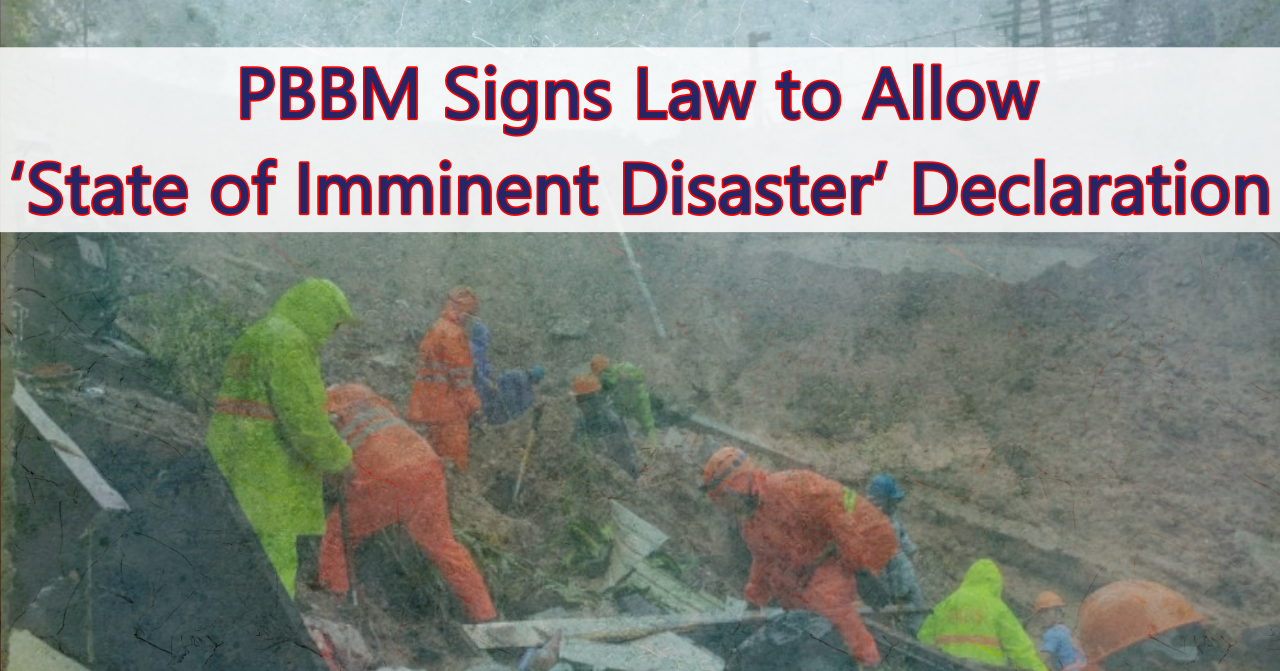President Ferdinand R. Marcos Jr. has signed into law Republic Act No. 12287, giving the government the authority to declare a “State of Imminent Disaster” to enable anticipatory action before calamities strike.
The measure, signed on September 12 and released to the public Tuesday, is seen as a major step toward strengthening disaster preparedness in a country highly vulnerable to natural hazards, as shared in this PNA report.

Anticipatory Powers
Under the new law, the President may declare a State of Imminent Disaster in specific areas—barangays, municipalities, cities, provinces, or entire regions—based on the recommendation of the National Disaster Risk Reduction and Management Council (NDRRMC).
Local chief executives are also empowered to make similar declarations in their jurisdictions upon the advice of their respective regional DRRM Councils.
The declaration must be anchored on a pre-disaster risk assessment showing highly probable hazards with catastrophic potential, classified as severe. Authorities are expected to act with at least a three-day lead time, extendable to five days, to mobilize resources.
Early Action Measures
Once a State of Imminent Disaster is declared, government agencies at both national and local levels are authorized to carry out anticipatory measures. These include:
-
Issuing public advisories and warnings
-
Prepositioning food packs and relief items
-
Mobilizing emergency response teams and volunteers
-
Conducting pre-emptive evacuations
-
Providing social protection to vulnerable sectors
The law also covers proactive measures to safeguard agriculture, food supply chains, public health, and community safety.
According to the measure, if risk assessments later show that projected impacts are unlikely to occur, the NDRRMC or local DRRM councils may immediately recommend lifting the declaration.
Integration into Local Plans
RA 12287 directs local government units (LGUs) to integrate anticipatory measures into their disaster risk reduction and management (DRRM) plans. LGUs are likewise required to allocate funds to support early action initiatives.
The NDRRMC is mandated to issue the law’s implementing rules and regulations within 60 days to guide agencies and local governments on compliance.
Disaster-Prone Country
The Philippines consistently ranks among the most disaster-prone nations in the world. On average, 20 tropical cyclones enter its area of responsibility each year, many of which cause severe flooding and landslides.
The country also faces risks from earthquakes, volcanic eruptions, and other natural hazards. Officials have long emphasized the need for anticipatory approaches rather than reactive responses to minimize loss of life and damage to property.
Strengthening Preparedness
By institutionalizing the declaration of a State of Imminent Disaster, officials hope to create a culture of preparedness where communities are equipped to act before calamities strike. The law underscores the government’s push for a proactive framework in disaster management, aiming to reduce risks, protect livelihoods, and save lives.
